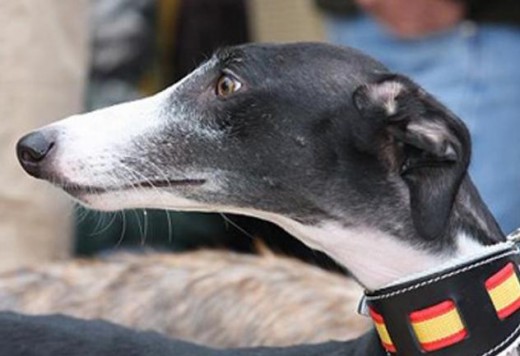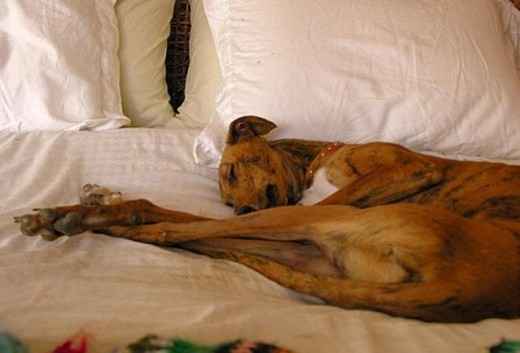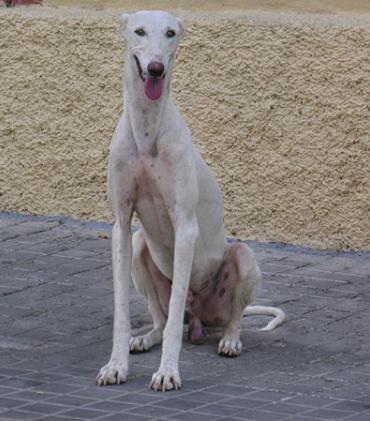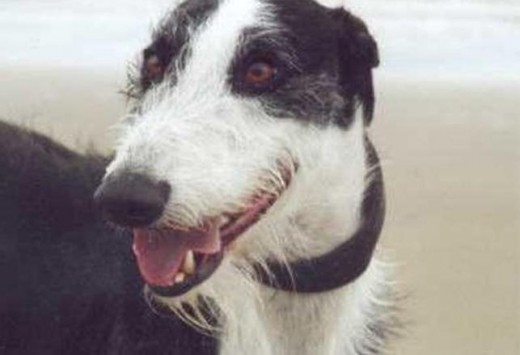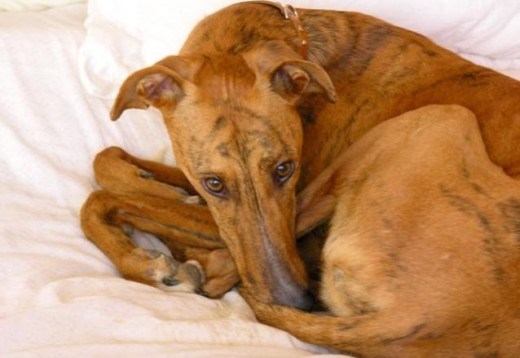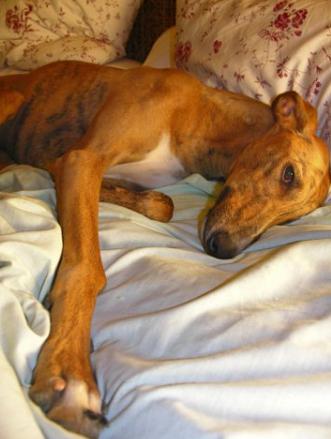- HubPages»
- Pets and Animals»
- Dogs & Dog Breeds»
- Dog Breeds
Spanish Greyhound
Think in it
"Men may act like dogs, but the opposite is humanly impossible."
D.Y.C.
Spanish Greyhound
Spanish Greyhound
The Spanish Greyhound is a dog of noble bearing, and like the other Greyhounds, has a noble appearance. Their shapes suggest power and speed, combined with strength, agility and ease to perform quick maneuvers.
These dogs have a very similar nature to the Greyhound. They are calm, gentle, and are happy to sleep on her back on a couch all day. Over 90% of Spanish Greyhounds can be considered friendly with cats and other animals.
Docile temperament, when inside the Spanish Greyhound is extremely quiet, provided you have the opportunity to disperse their energy into open space with regularity. He is kind and excellent companion for children, but should not be considered a toy. It will recognize those who understand and respect, knowing reciprocate with loyalty who loves him. It's certainly not a dog to get stuck, and just feel happy in the company of its owner.
There are few people who have a Greyhound Spanish only as a companion dog, being mostly adopted after the end of the hunting season.
The Greyhounds kept the Spanish characteristics that made them suitable for running long distances over rough terrain. He is a dog forms thin, elongated, slightly longer than tall. His legs are like those of rabbits, ideal for running on uneven terrain.
The head of the Spanish Greyhound is long and tapered, ending in a small black nose. The eyes are small and oblique, usually dark brown in color, conveying calm, but also shy. The ears are wide at the base, in the form of rose and set on high.
This breed has a compact bone structure, with arched belly enough inside. The chest is deep and powerful, but little wider. The tail is set low, long, tapering to the tip. At rest, remains low, in contact with the pause.
Are known three types of Spanish Greyhounds: the hair smooth, long-haired (almost nonexistent) and rough coated. Of the three, smooth hair is the most commonly found in both the championship game as in dog shows. The smooth and short hair are preferred in Spain, which has focused most of their efforts in breeding this variety. Only 20% of Greyhounds are by Spanish hard.
The Hound of smooth hair has been the most well suited to the Iberian geography, with the aridity of its climate and fields with different variations. Nature was in charge of setting up a tough race to aggression in wild animals and the environment.
The coat of the Spanish Greyhound is dense, but thin, very smooth to the touch. They are found in various colors like brindle, black, white, cream, brown, yellow, red and cinnamon. All colors are accepted, the most common are with white markings.
Males should be between 24.41 and 27.56 inches and females between 23.62 and 26.77 inches, while allowing a deviation of 0.79 inches if copies are perfectly proportional.
Historic
The Spanish Greyhound is a very old breed and its origins are almost lost over time. Facts show that in prehistoric times, hunters migrated from Africa to Spain several times. One of the oldest archaeological finds of this period are the murals of hunting scenes, found in the cave of Altamira in northern Spain, dating from about 10,000 BC Probably these prehistoric hunters used dogs to help them fast to chase animals like gazelles and wild goats.
The Spanish Greyhound dogs probably descended from the ancient Celtic tribes. The Celts migrated through Europe to the Iberian peninsula, which today includes Spain and Portugal, bringing their culture and their dogs, and the height of the Celtic influence was around 500-400 BC It can be said is that the Spanish Greyhound a heritage of Celtic influence in Spain.
It was common to find Spanish Greyhounds accompanying warriors. El Cid, the hero of the Reconquer sword which guaranteed their presence in the Mediterranean, was often seen feeding their Greyhounds before leaving to lead the troops.
The Spanish Greyhound adapted to the terrain and climate Iberian, becoming a valuable hunting dog to the hare for all classes. It was also used as a guard dog, and although his vision is your fort, was also able to follow the trail of the prey using olfaction.
Other evidence left over the centuries is the wall of the Chapel of San Baudelio Casillas in Soria, dating from the twelfth century. In it can see a scene of hunting the hare, depicting three dogs very similar to Spanish Greyhound.
You can also find the Greyhound Spanish literature and historical heritage of Spain. In 1605, the greatest Spanish poet and writer, Miguel de Cervantes wrote his masterpiece, Don Quixote, about a medieval knight who believes in love, fantasy battles and glorious battle "monsters" for the love of a lady. The book begins with these words: "In place of La Mancha, whose name I remember not long ago lived a nobleman, one of those bearing a lance, an old shield, a lean horse and a Greyhound game."
In the magnificent painting "The Hunter" by Adriaen Cornelisz Beeldenmaeker (1618 - 1709) - Museum Amsterdam's Rijksmuseum, the dogs Greyhounds are clearly portrayed Spaniards. However, an Englishman might say that this is Greyhounds.
The Spanish Greyhounds lost many of its original features with the massive importation of Greyhounds Irish, mostly from the 50s. The import of these Greyhounds was encouraged by the Spanish Federation of Greyhound, to increase the number of lanes between the 30s and 70s. Between 1912 and 1930, forty-four dogs were exported from Ireland to Spain. Between 1978 and 1979 were exported in 2700 greyhound. Spain acquired dogs considered "scum" in Ireland: slow, injured or aggressive. The dogs were preferred because the Spanish track were small and their tight curves require smaller dogs.
In the late '60s and '70s, with the increasing purchase of cottages for the townspeople, there was a return to the habit of hunting, especially on weekends.
The theft of Greyhounds from shelters when starting a new season of hunting is huge, and so the choice of sending them up for adoption in countries like Holland, France and Belgium, where people can recognize the qualities of these beautiful animals.
In the mid-twentieth century, began to recover the original type of race, aiming to international recognition. In 1983, the breed standard was accepted by the International Canine Federation (FCI), reviving the breed internationally. With the publication of the standard, the creation of the Spanish Greyhound left to accommodate the mix with other races, contributing to the separation between the Spanish Greyhound and Greyhound. Unfortunately, many Spanish Greyhounds are bred for hunters who have no interest in recording them.
Care
The Spanish Greyhound is an independent dog and shy. Serious and reserved, not much given to joking or exaggerated statements of affection. Because of these characteristics is a difficult dog to train. However, it needs no training to do what they do best: run free, where their energetic and lively personality is highlighted.
Need plenty of exercise, being almost a mandatory daily walk. He fits well in an apartment, provided that walk regularly, but the ideal would be a house with a yard for him to exercise.
As a hunting dog, rodents and cats are seen as prey, but the Spanish Greyhound can get along with other animals, since they have been accustomed to since childhood.
The Spanish Greyhound is a very healthy dog, not presenting a specific impact to diseases that usually affect the big dogs. Life expectancy is approximately 12 years.
Easy to maintain, the Spanish Greyhound's coat requires only weekly care: a good brush to remove dirt and loose hair and bathing only when they get dirty.
Good health in the Spanish Greyhound has been ensured over the years by natural selection, because until the 70's they were used almost exclusively for hunting the hare. This breed has a legacy of healthy dogs and truly robust.
GENERAL APPEARANCE - greyhound dog of good size, commendable, arched, short lines and dolichocephalic. Skeletal structure compact, long and narrow head, large capacity chest, belly very tucked up, and very long tail. Pelvic girdle (posterior) upright and muscular. By a thin and short or moderately long and hard.
Proportions - Moderately long-line structure; trunk length slightly greater than height at withers. Should seek to functional harmony and proportionality, both in season and in motion.
TEMPERAMENT / BEHAVIOR - character sometimes serious and withdrawn, but during the hunt, shows a hunter with great energy and vivacity.
PELAGE
Skin - very proper to the body in all its regions, strong and flexible; pink. The mucous membranes are dark.
Hair - dense, very thin, short, smooth, coating the body up between toes. Slightly longer in the posterior thigh. The variety of moderately long haired presents higher roughness and hair length, which can be variable, although always evenly coating the entire body tends to shape beards and whiskers on the muzzle, eyebrows and tuft on his head.
COLOR - all colors are accepted. The following colors are considered more typical colors in order of preference:
• fawn and brindle more or less dark and well pigmented.
• Black.
• mottled with black, dark and light.
• Toasted.
• Brown.
• Yellow.
• Auburn.
• Whites.
• With white marking and grizzled.
SIZE - Height at withers: males from 24.41 to 27.56 inches and females from 23.62 to 26.77 inches.
- Length: slightly larger than the height at the withers.
- Weight: (standard not comment).
HEAD - proportionate to the trunk, long, lean and dry. The ratio skull-muzzle is 5 / 6: 5 length of skull, snout length 6. Axes of skull and muzzle divergent. Seen from above, the skull-muzzle should be long and very uniform (no lumps), with long, narrow snout.
Skull - the width and low profile arched. The skull has a well marked furrow in its first two-thirds, the frontal sinuses and the occipital crest are simple statements.
Gentle
Click thumbnail to view full-size













